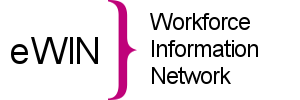Empowering, innovating and transforming using Electronic Service Record (ESR) self service
This case study details the Countess of Chester Hospital’s experiences of rolling out the functionality of manager self service.From the outset, the trust has utilised the full functionality of self service, in addition to integrating the OLM/e-learning functionality, and this has positioned them as one of the leaders across the north west region.Overview:The HR and Wellbeing Business Services (HRWBS) have now fully implemented ESR Manager, Supervisor and Administrator Self-Service for the Countess of Chester NHS Foundation Trust (COCH). From the outset, the Trust has utilised the full functionality of Self Service, in addition to integrating the OLM / e-Learning functionality, and their drive has positioned them as one of the leaders across the North West region in rolling out aspects of ESR Self Service and other elements of ESR which many other Trusts are still to maximise the use of. Consequently, the full employee life-cycle from hiring a new employee through to ending employment is managed by using ESR Self Service within COCH. After the launch of our shared HR service in July 2011, we moved from providing HR and Payroll services for 4,000 employees and are now providing HR and Payroll services to over 16,000 employees across a number of client Trusts in the Wirral and Cheshire region, which includes the rollout of Manager Self Service at Wirral University Teaching Hospital NHS Foundation Trust and a pilot of Supervisor & Employee Self Service to another client Trust. The Countess of Chester went live on ESR in April 2007 and integrated the launch of OLM at the same time. After an 18 month ‘bedding in’ period, we conducted a review of processes and compared the use of ESR Self Service against the proposed benefits of 3rd party Time & Attendance and e-Rostering suppliers. There were clear qualitative and efficiency benefits to be gained, so before we made any significant investment in additional software, we explored using ESR. Before the roll out, we reviewed our processes which were, in the majority, paper based for data entry by the Payroll team. A combination of paper flows, retrospective workforce reporting, data input and reliance on senior management to sign off paper forms was creating delays in the processes and this was not only inefficient but often the wrong people were burdened with administrative tasks. To support the Self Service project and improve team work across back office functions, we also implemented the following;
- Establishment control in December 2010
- Vacancy control / standardised recruitment practices
- January 2013
- User Identity Management (UIM) / ESR Interface - January 2011
- Maximising the use of Interfaces to support recruitment & registration management
- Integrated E-Learning
- Electronic timesheets via WEB ADI

